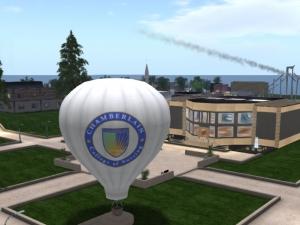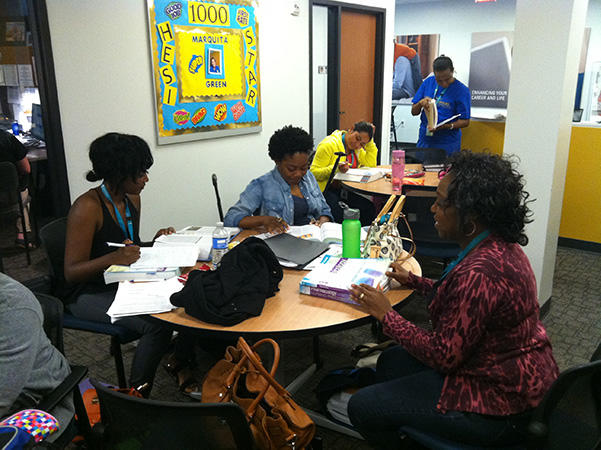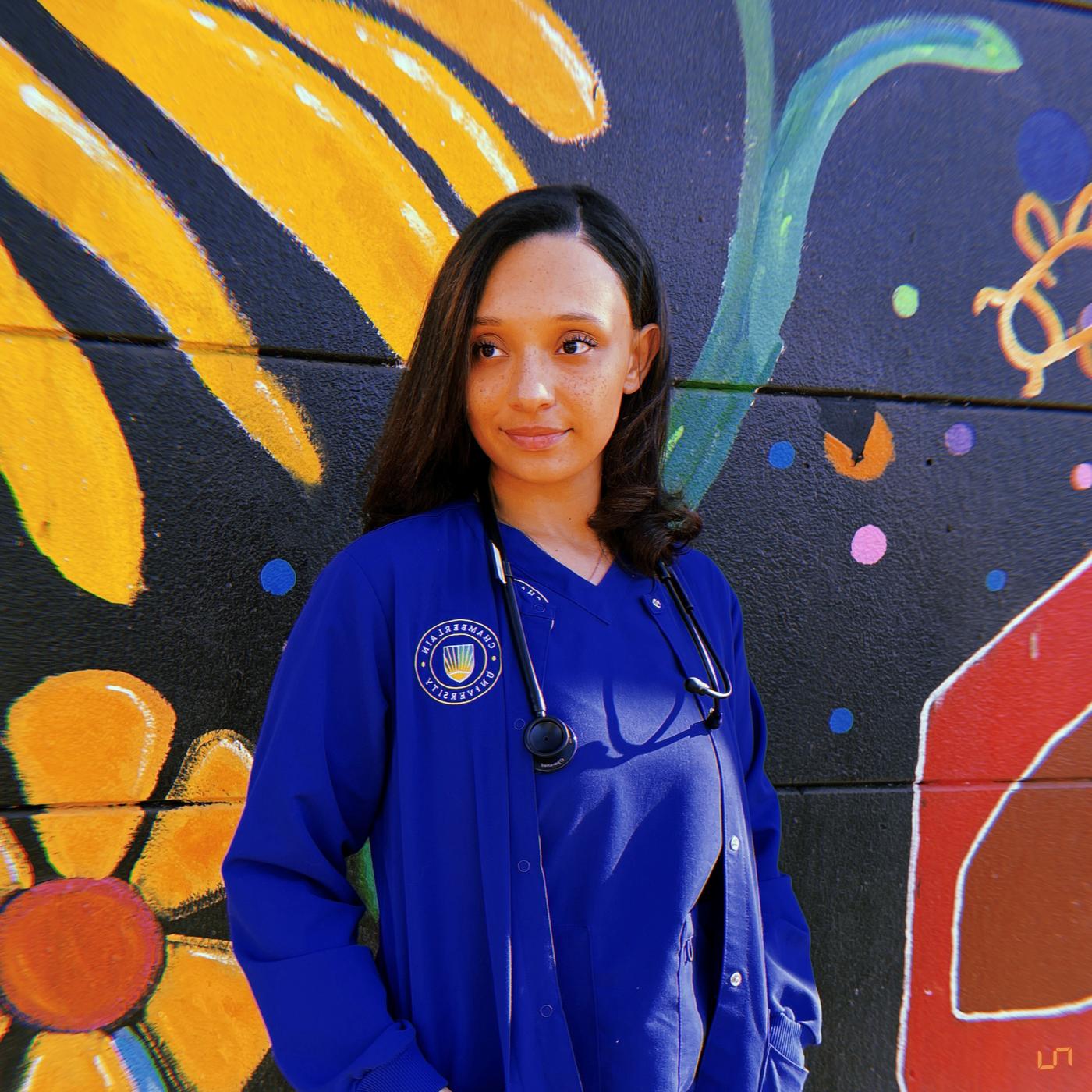Featured
Tags
Share
- Home / Blog / Campus News / Nursing Students Find New Opportunities in Virtual World of Second Life
Nursing Students Find New Opportunities in Virtual World of Second Life

This week, Chamberlain Professor Dee McGonigle, PhD, RN, FAAN, CNE, has been riding bikes with her Master of Science in Nursing students. Once they master the art of pedaling, they’ll take flight in hot air balloons and zip-line through the skies.
The activities are all part of the orientation process at Chamberlain College of Nursing’s virtual campus in Second Life.
Second Life (SL) is a 3-D, virtual world where users are known as residents, and students choose avatars as graphical representations of themselves. Avatars can walk, run, sit, stand, fly and interact with other residents – but first, students must learn to control and operate them, which is where the bicycles come in.
“The orientation island is a fun, engaging place to draw students in and help them enjoy their time in our simulated world,” said Carole Eldridge, DNP, RN, CNE, NEA-BC, director of graduate programs at Chamberlain.
McGonigle has been working with Julie McAfooes, MS, RN-BC, CNE, ANEF, web development manager at Chamberlain College of Nursing, to create an online world that includes a hospital with a pediatric unit, a nursery, exam rooms, meeting and educational spaces, and two neighborhoods – one on the bad side of town, and one more modern and clean area, appropriately dubbed “Summerville.”
For the first time, MSN students in the education, executive and informatics specialty tracks will be able to complete their practicum experiences in Second Life. Second Life practicums are designed to help those who cannot do a practicum in a real-world situation because of geographic or other limitations.
“Second Life is not a place to learn fine motor skills,” McGonigle said. “You’re not going to teach someone how to give an injection, but you can teach a student to assess a patient or even evaluate how students interact with that patient’s family.”
Second Life enables MSN students in the education specialty track to teach a classroom full of avatars. Faculty are planted among the students, perhaps acting badly or raising their hands to ask questions that test the student’s knowledge of a topic and see how they handle certain situations in the classroom. Every experience will end with a debriefing, where faculty and students come together to discuss the lessons and challenges from the session.
Second Life also holds potential to provide scenarios and experiences students rarely see during a traditional practicum experience. Students in the executive specialty track rarely get to work with a healthcare facility’s financial information during a practicum. Yet, when they enter the real world, this will be a major area of responsibility. In the Second Life practicum, managing budgets is a part of the experience.
“Second Life is a wonderful extension of an online program that allows students to immerse themselves in their specialty area doing what they would do in practice, but in a virtual world,” McGonigle said.
Other scenarios might include a community health survey, where students set out to evaluate risks in the community and where improvements could be made. Executive track students will evaluate whether a cardiac wellness clinic is truly needed in one community through interviews with a community activist, nursing officer, and directors of engineering and marketing.
The faculty team is also working on creating an inter-track scenario, where students from each of the MSN specialty tracks will work toward a common goal. Teamwork such as this is another benefit of Chamberlain’s new online campus, McGonigle said.
“Second Life is an interactive social networking area where you can get together and have meetings,” she said. “It can enhance students’ clinical experiences and put them in situations where they have to critically think on their own, as well as work with other people as a team. It has great potential to create an interdisciplinary feel, as we bring in physician avatars, social workers and case managers as well.”
By Molly Mattison
More from Campus News
Request More Information
To receive the Chamberlain University Program Guide, including associated career paths, please select a program of study.






